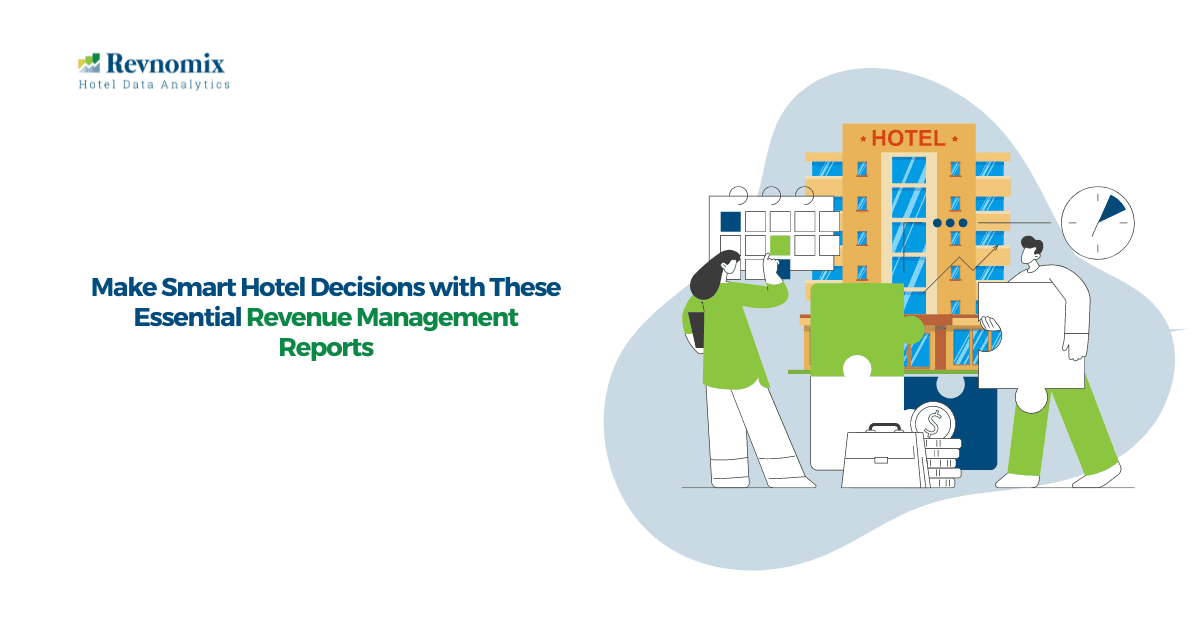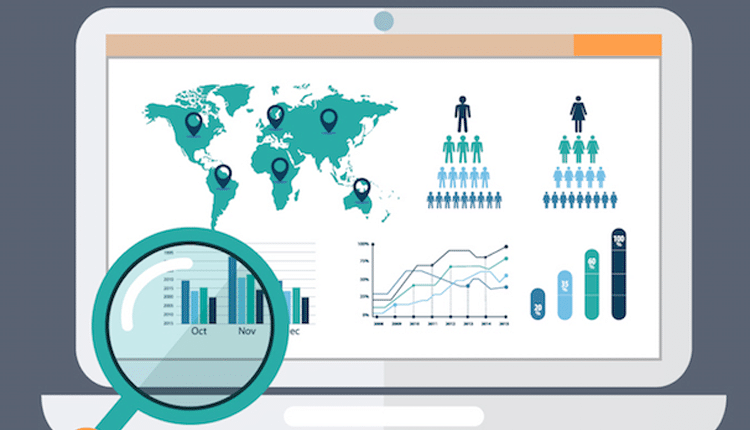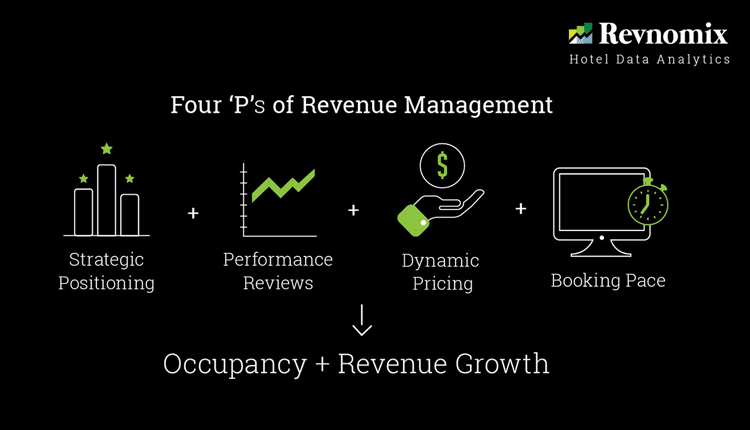Revenue management plays a crucial role in maximizing hotel profitability, helping hoteliers make informed decisions based on data-driven insights. By leveraging essential revenue management reports, you can effectively optimize pricing, forecast demand, and improve overall hotel performance. In this blog, we’ll explore the key reports you need to use to make smart decisions and enhance your hotel’s success.
1. Occupancy and Revenue Reports: The Foundation of Revenue Management
Occupancy and revenue reports are the backbone of effective Revenue Management. These reports offer insights into how many rooms are sold and at what rate. Monitoring occupancy patterns alongside revenue helps you gauge performance and make adjustments to optimize both occupancy and revenue.
1. Utilize these reports to track room nights sold across different dates and seasons.
2. Identify trends in guest preferences and adjust marketing strategies accordingly.
3. Analyze past data to apply dynamic pricing strategies and adjust rates based on demand.
4. Use Revnomix to gather accurate occupancy and revenue reports for real-time analysis.
These reports allow you to strike a balance between high occupancy and optimal pricing, which leads to higher overall revenue.
2. Demand Forecasting Reports: Predict Future Trends with Revenue Management
Accurate demand forecasting is essential to a successful Revenue Management strategy. Demand forecasting reports analyze historical data, seasonal trends, and market conditions to predict future booking trends.
1. Use demand forecasting methods to anticipate periods of high and low demand.
2. Predict future occupancy levels and allocate resources accordingly.
3. Adjust room rates during peak periods to maximize revenue through dynamic pricing strategies.
4. Use tools like Revnomix to access real-time demand forecasting reports for better planning.
With these insights, you can adjust your pricing strategies and marketing campaigns well in advance, ensuring your hotel remains competitive during high-demand periods.
3. Rate Shop Reports: Benchmark Pricing with Revenue Management
Rate shop reports enable you to compare your hotel’s pricing with competitors. This is a critical aspect of Revenue Management, as it allows you to adjust your rates to stay competitive without sacrificing profitability. Rate shopping data can show you how your competitors are pricing their rooms in real-time, giving you a clear advantage.
1. Benchmark your hotel rates against nearby competitors for similar room types.
2. Implement pricing analytics tools to assess price fluctuations in the market.
3. Make real-time adjustments to pricing using yield management solutions.
4. Leverage Revnomix to access reliable rate shop reports and stay competitive.
By staying aware of your competitors’ pricing strategies, you can make smarter, more informed decisions to boost your hotel’s revenue and market share.
4. Segment Reports: Understand Your Guest Demographics for Revenue Optimization
Segment reports help you understand the different types of guests that frequent your hotel. Whether it’s business travelers, vacationers, or group bookings, each segment behaves differently. Understanding these patterns is key for Revenue Management as it allows you to target the right guests with the right offers.
1. Analyze guest booking patterns and identify trends in different market segments.
2. Customize promotions and packages based on the preferences of each guest segment.
3. Use revenue optimization techniques to offer tailored rates to business or leisure travelers.
4. Improve hotel revenue growth tactics by targeting high-value guest segments through Revnomix.
Segment reports not only help with pricing but also enable you to market more effectively, increasing both guest satisfaction and profitability.
5. Profit and Loss Reports: The Core of Profit Maximization Strategies
Profit and loss (P&L) reports are essential for tracking the overall financial performance of your hotel. For effective Revenue Management, understanding where your profits and losses come from will help you refine your operations and reduce unnecessary costs.
1. Identify high-revenue sources and areas where you can cut costs.
2. Align your expenses with your profit maximization strategies for better financial health.
3. Analyze your net operating income alongside operational costs for better budgeting.
4. Utilize Revnomix to generate detailed P&L reports and fine-tune your strategies.
By analyzing P&L reports, you can make informed decisions about resource allocation, ensuring your hotel remains profitable without sacrificing quality.
6. Booking Pace Reports: Monitor Trends with Revenue Management
Booking pace reports help you monitor how quickly rooms are being booked over a period of time. This report is a key tool for Revenue Management, allowing you to track booking trends and adjust pricing strategies accordingly.
1. Track how far in advance guests are booking rooms, especially during peak seasons.
2. Identify periods of slower bookings and apply discounts or promotions to attract more guests.
3. Implement yield management solutions to adjust rates based on booking pace data.
4. Use Revnomix to track booking pace and stay ahead of market trends.
Monitoring your hotel’s booking pace enables you to adapt pricing and promotional strategies in real-time, ensuring that your hotel maximizes revenue throughout the year.
Request a Demo for the Best Revenue Management Services
7. Revenue per Available Room (RevPAR) Reports: Measure Performance Effectively
RevPAR is one of the most important KPIs in Revenue Management. It measures how much revenue is generated per available room, regardless of occupancy. RevPAR reports help you determine whether your pricing strategies are effective in driving revenue.
1. Use RevPAR reports to assess the effectiveness of your pricing strategies.
2. Identify opportunities to raise room rates during high-demand periods.
3. Combine demand forecasting methods and RevPAR analysis to optimize pricing.
4. Leverage Revnomix to access in-depth RevPAR reports for improved decision-making.
Tracking RevPAR helps you strike a balance between occupancy and pricing, allowing you to optimize revenue without lowering the overall guest experience.
Conclusion
Incorporating these essential Revenue Management reports into your hotel operations is key to making smart, data-driven decisions that enhance profitability. From occupancy reports to RevPAR tracking, these tools will guide your pricing, marketing, and operational strategies. By leveraging platforms like Revnomix, you gain access to real-time data that enables you to make informed choices that align with your revenue goals.
By using dynamic pricing strategies, revenue optimization techniques, demand forecasting methods, and yield management solutions, you ensure that your hotel stays competitive and profitable. Don’t leave your hotel’s success to chance—use the right reports to make better decisions and drive revenue growth.







